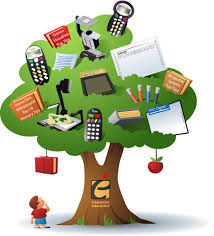
Interactive learning refers to the pedagogical approach incorporating the use of urban computing and social networking tools and technologies in the design, delivery and evaluation of education. It is the result of the hyperactive use of computers, tablets, and smartphones as well as the Internet for the creation, distribution, and discussion of information among teachers, educators, and students.
Suffice it to say that the current crop of students, known colloquially as the Net Generation or Generation Y, fully expects interactive learning tools and technologies in their education. This is true in virtually all levels of education from kindergarten to post-graduate programs.
The following interactive learning tools and technologies has revolutionized the fundamental principles, processes, and practices in education.
Hardware and Software Components
Of course, the tools and technologies for interactive learning including social media are of little to no use without the hardware and software components. These components include the computer setup itself the monitor, central processing unit, keyboard and mouse for desktops and the all-in-one unit for laptops.
The desktop or laptop should obviously have the appropriate software for connection to the Internet as well as for using the desktop education applications. Most can be purchased for a reasonable fee while others are free.
Since even the Net Generation still likes ink-and-paper outputs, it also makes sense to invest in printers for schools and education institutions. Many online classrooms, in fact, encourage their students to put to full use their printer setups at home considering that, in the real world, a truly paperless society is still in the far future.
Social Media and Networking Sites
Education has become more socialized because of the emergence and prevalence, obviously of personalized digital media sources. Students and educators have plenty to choose from including but not limited to blogs, social networking sites like Facebook, Google+ and Twitter, and social media like Reddit and YouTube.
With these websites, the audience has also expanded away from the confines of the classroom to the worldwide reach of the online universe. Today, the world is truly your stage; the trick is finding the ways to shine on it and to make your mark in your education niche.
Websites with Dedicated Applications
Educators also have plenty of websites with dedicated applications that can be used for teaching and learning purposes. Most of these websites provide for free services as well as the opportunity to learn alongside the students.
But it is first necessary to determine the learning objective before choosing the appropriate website for its learning tools. Examples of websites matched with learning objectives are:
- Create web-based timelines Capzles, Xtimeline, and Timetoast
- Publish writings online Googledocs, Issuu, and Docstoc
- Real-time online discussions TodaysMeet and Google Moderator
- Create guided research activities Google Customized Search Engine, QuestGarden, Trackstar
- Create online portfolios Blogger, WordPress, and Edublogs
- Create and edit videos Vocaroo and Audacity
- Create or find rubrics for multimedia projects Rubistar and Rubric Machine
Suffice it to say that the online universe has something for every educator, teacher, and student to use. Just use your creativity in creating new things from existing applications and, even better, creating new applications suitable for the evolving needs of the real and virtual classrooms.
Urban Computing
This is actually a set of technologies designed to provide information on the go, so to speak. Urban computing then involves the use of wireless networks with gadgets like smart phones, tablets and laptops on one hand and search engines and location-based media on the other hand. The enhanced connectivity between users has revolutionized the design and delivery of education to the present generation in so many ways.
Keep in mind, nonetheless, that these can be a boon or a bane for educators and students depending on the manner in which these are used so wise judgment is still a must.
